CPAP DEVICE
CPAP DEVICE FAQS & PRODUCT INFORMATION
Important Note
If symptoms persist while on CPAP therapy, talk to your health professional. Always read the instructions for use for your PAP therapy equipment to ensure it is used safely and as intended
General Questions
It feels like I'm being inflated by my CPAP device, the air is causing me to belch. How can I stop this?
This is known as aerophagia and is caused by swallowing air. This usually subsides once you become more comfortable with breathing against your therapy pressure. Contact your Sleep Therapy Consultant if these problems persist.
Which is the best CPAP brand/device?
We carry four brands; Philips, ResMed, Fisher & Paykel and BMC. All four brands have various models with slightly different features. Speak to your Sleep Therapy Consultant or Sleep Physician to find out which one is best suited for you.
How long will my CPAP device last?
The life expectancy of a CPAP device differs based on the specific model, its usage, its operating environment and how well it is maintained. In general, CPAP devices have a service life of approximately three to five years.
Can I travel with my CPAP device?
You should certainly try to use your CPAP device while on holidays. It will help you and those you travel with enjoy the holiday more. Most CPAP devices work on both 110 and 240 volts power sources. Many CPAP devices also run on a 12 volt battery. This means they can be used when overseas and while camping. As a general rule, most CPAP devices are able to run on other voltages, such as 110V in the United States without modification, as they have an inbuilt “switch mode” power supply.3
If you plan to use your device while on a flight, ResMed Airsense 10, ResMed AirMini,4 and F&P SleepStyle all automatically compensate for the change in altitude.5 Philips Dreamstation, Philips Dreamstation Go 6and F&P SleepStyle all automatically compensate for the change in altitude.
Can I leave my CPAP device switched on at the power point?
Yes, the CPAP device will only start therapy when you press the start button on the device or if the mask is applied to your face (only if the Auto Start setting is switched on). When the Auto Start setting is on, the CPAP device will detect your breathing through the mask and begin therapy. Otherwise the device will remain in sleep mode.
Is the device noisy?
Treatment should not be louder than a whisper. The noise of the device may fluctuate between inhalation and exhalation, but should mimic that of a soft breathing sound. If your equipment is making loud noises, some of the parts might not be connected properly or it may need to be repaired. If you are hearing a hissing noise, check that all your equipment is connected properly and that there are no holes or deformities.11 You can try placing a mouse pad under the device to reduce noise vibrations. The Philips Beside Organiser offers a noise reducing pad to sit your device on and has a pocket for safe daily storage of mask and tubing as well.
| BMC G3 A20 | F&P SleepStyle Auto | Resmed AirSense10 |
Philips Dreamstation
|
|
| Sound Pressure Level | < 28 dBA (at 10cmH2O) | <28 +/- 1.5 dBA (at 10cmH2O) | <27 +/- 2 dBA (at 10cmH2O) |
<27 +/- 2 dBA (at 10cmH2O)
|
| Power Noise Level | < 36 dBA | <35 dBA | <35 +/- 2dBA | <35 +/- 2dBA |
Airsense 10: Autoset – Clinical Guide
DreamStation: User Guide
Sleep Style: User Manual
BMC: User Manual
Are CPAP and APAP both effective?
CPAP devices deliver a constant air pressure while the patient is sleeping. Automatic, or Auto-Titrating Positive Airway Pressure (APAP) devices use an algorithm to deliver a variable air pressure according to the patient’s needs. By constantly measuring how much resistance is present in your breathing on a breath-by-breath level, APAP technology knows whether to decrease pressure when the upper airway is stable, and increase pressure when it senses an airway event (such as an apnea, a hypopnea, flow limitation or snoring). Both CPAP and APAP are effective treatments of sleep apnea but unlike CPAP devices, APAP devices only deliver the amount of pressure necessary at any given moment. This can contribute to a more comfortable therapy experience for the patient. Some Physicians find patients with more complex sleep apnea conditions (such as REM-related apnea or positional apnea), or who simply cannot get used to standard CPAP therapy, may experience better results with APAP therapy.
How is the CPAP device serviced?
We encourage you to have your CPAP, APAP or BiLevel sleep apnea device pressure tested to ensure you are still receiving the correct pressure. Utilising a pressure manometer, we test the device to ensure it reaches and maintains the pressure that is set. Depending on the results of the general servicing, it may have to be sent to the manufacturer for further assessment.
How do I travel with my CPAP device in aeroplanes?
Before flying with your sleep therapy equipment, you should: Get clearance from the airline to use your device on the flight at least two weeks prior to the date of departure. If your approval is in the form of a letter, carry a copy with you when checking into your flight. Find out if you can sit near a power source on the aircraft. If you don’t have access to power, the RPS II, our lightweight and portable external battery, is designed to run an AirSense™ 10, AirCurve™ 10 or Lumis™ sleep apnea device (without humidification) for over 14 hours. Operating time is reduced with older batteries. See the Battery/device compatibility list for details of operating times with other ResMed devices. Confirm the type of power cord or adapter used by the aircraft. Carry a letter from your doctor certifying your need your CPAP device for sleep apnea therapy. Take a copy of ResMed’s FAA compliance letter for ResMed sleep apnea devices.
Ensure that there is no water in the humidifier tub before detaching it from the CPAP device and pack it away. Do not use your humidifier on the aircraft as turbulence increases the risk of water spillage and damage to the device. Enable Airplane Mode (in devices with wireless connectivity*. See user manual for details.) Most ResMed sleep apnea devices run on most aircraft power supplies with a suitable adapter. While most of our CPAP devices will automatically compensate for altitude changes experienced during the flight. Some older CPAP devices might require manual adjustment. If no adjustment is made, it may deliver less effective therapy. Please consult your doctor for more information.
How much is the therapy equipment?
The cost of CPAP therapy equipment varies depending on what brand and model you are looking at. It’s best to speak to your Sleep Therapy Consultant to find out more about our CPAP package offers and which one is most suitable for you. We also offer CPAP device rentals and interest free plans if you have difficulties in meeting the up front costs.
How come I need the humidifier?
The air delivered during therapy may overwhelm the body’s ability to add heat and moisture, which can lead to a sore, dry throat, nasal congestion, or a runny nose.19Heated humidification has been shown to help minimise the side effects associated with positive airway pressure therapy, and help make it a more comfortable experience.
Do you have to use the humidifier?
No, you do not have to use the humidifier, but it is recommended because it adds heat and moisture to the dry air that is being provided with the therapy.
How will I know if I should stay on CPAP treatment?
You should first determine if CPAP treatment is effective at treating your sleep apnea. If your apnea hypopnea index (number of times you stop breathing per hour) has been reduced while on therapy, then this is a good indication that the therapy is effective in treating your condition. You should also consider if the symptoms associated with sleep apnea are resolving as a result of the therapy. You should consult your physician if you have any concerns about continuing your CPAP treatment.
Do I have to change the water in my humidifier every day?
Yes. Humidifiers are a potential source of Legionnaires’ disease. Patient education on device maintenance is important in reducing the risk of infection. Proper upkeep of your CPAP device can help ensure the device functions properly. We recommend using fresh distilled water in your humidifier before starting your therapy. Distilled water prevents mineralization in the humidifier, and helps extend its operating life
How do I know if my therapy pressure is accurate?
If your Apnea Hypnopnea Index or AHI (number of times you stop breathing per hour) is considered controlled in comparison to your AHI on your sleep report, your device pressure is generally considered accurate. If you use an Auto-titraing device, the mask seal, body position and allergies are just a few factors that can contribute to changes in your pressure during therapy. You should consult your physician if you have any concerns about the pressure setting of your CPAP device and its impact on the effectveness of your CPAP treatment.
Can I change the settings on the CPAP device myself?
We advise that you speak to your Sleep Physician if you would like change the settings on your device relating to your prescription. Depending on the change, you may require another prescription from your Sleep Physician. Your Sleep Therapy Consultant may be able to make small adjustments to the device’s comfort, humidity and temperature settings. This may be done remotely if you are registered with our connected care system.
Why am I still tired after using my CPAP device?
This may be due to a number of reasons. A few of the most common ones are described here.
1. Removal of Mask: It can be difficult to adjust to CPAP therapy, waking in the night may prompt removal of the mask. Many people take their mask off towards morning, convincing themselves that, without it, they can get some “good sleep”. Unfortunately, obstructive sleep apnea is often worsened in the last few hours of the night. Rapid eye movement (REM) sleep occurs in the last third of the night. By removing the mask at any stage during the night, you reduce the benefits of the therapy and as a result may not feel any different in the morning.
2. Mild Sleep Apnea: If you have been diagnosed with mild sleep apnea, with only 10 events per hour, and the number of apneic events is reduced to 5 events per hour with therapy, you may not experience as much improvement.
3. Not Enough Time: People may expect instant results from CPAP therapy, but this is rarely the case. If sleep apnea is very severe with significant symptoms prior to treatment, a dramatic improvement may occur. When it is more subtle, it may take longer to notice improvement. If you have only used the therapy for a few days, and especially if you have not been able to use it through the night, more time is required to experience improvements. It may take several weeks before you can note the improvement. If you are not noticing a benefit with your treatment, speak with your Sleep Therapy Consultant about ways to optimize your therapy. If this persists, see your Sleep Physician.
Can I set an alarm on the device to wake me to put my mask back on?
Your mask needs to be fitted throughout the night in order to achieve the full benefits of your therapy. If you are removing the mask off during the night consciously or unconsciously, it is a good indication that either your mask is not fitted correctly or you may need replace a mask part. Most patients unknowingly remove their mask because it’s uncomfortable or leaking.
Why does my humidifier use different amounts of water each night?
Most humidifiers have manual and automatic settings. Manual settings are set by the user, while automatic settings allow your humidifier to make adjustments to maintain a certain temperature and humidity level throughout the night. The temperature and humidity of the room where you are sleeping will have an effect on the amount of water used in the humidifier. For example, if your environment is quite hot and humid, the humidification device is more likely to deliver less humidity and thus result in more water remaining in the water chamber at the end of your therapy. If you have a large mask leak, this may also increase the amount of water used by the device. If you are having difficulties with the settings on your humidifier, refer to the user manual or consult your Sleep Therapy Consultant for support.
How much weight will I lose after starting CPAP therapy?
Untreated sleep apnea can reduce time spent in calorie-burning activities. Feeling low energy, tired, and unfocused are common sleep apnea symptoms that make it hard to participate in daily activities such as walking the dog, mowing the lawn or pushing a shopping cart. If diagnosed with OSA, CPAP therapy can improve your sleep and overall well-being.29A healthier lifestyle will have a positive impact on your weight loss efforts. By improving your sleep quality, CPAP therapy can lead to significant weight loss in the first 3 months of therapy in obese people with severe sleep apnea.
You have the option of a CPAP or APAP Device for PAP therapy.
Read more on what positive airway pressure (PAP) means and the key differences between CPAP and APAP here.
CPAP Devices
View our range of CPAP devices from leading manufacturers below. Click into each CPAP device to view the product in detail, watch related videos and download any supporting documents you may need.
Fisher & Paykel
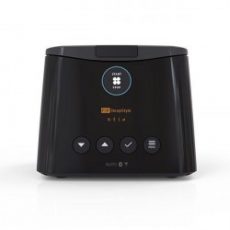
Fisher & Paykel SleepStyle Auto
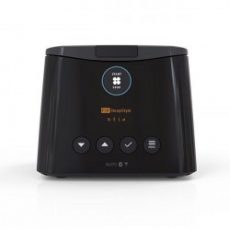
Fisher & Paykel SleepStyle
Philips
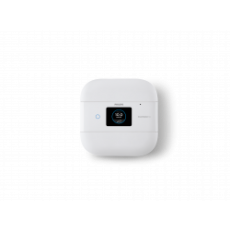
Philips DreamStation Go
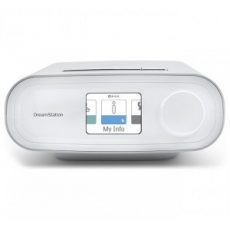
Philips DreamStation PAP/APAP
ResMed
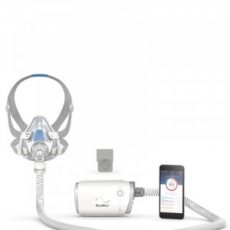
ResMed AirMini Bedside Starter Kit
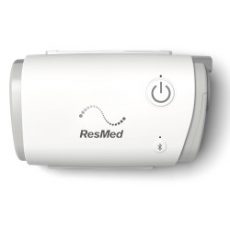
RESMED AIRMINI
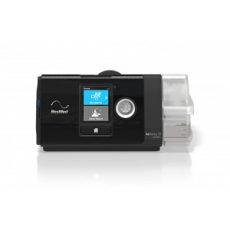
RESMED AIRSENSE 10 AUTOSET 4G
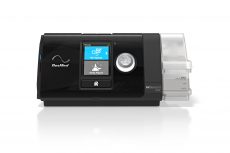
AirSense 10 Elite
